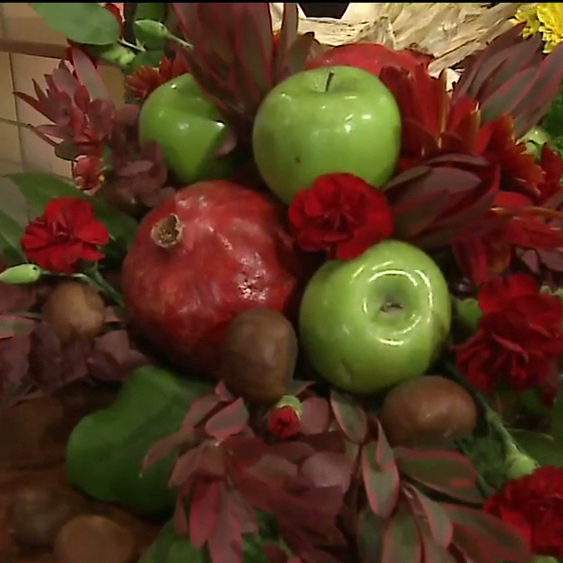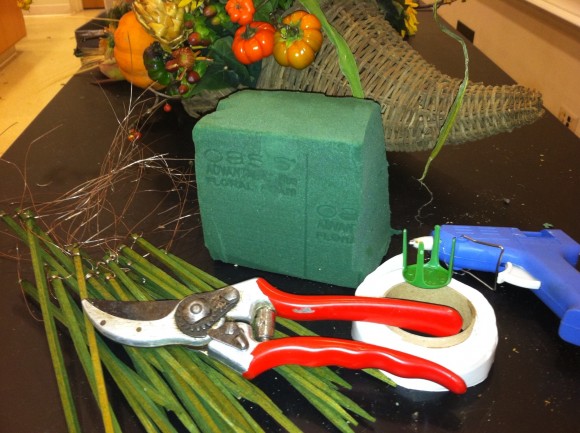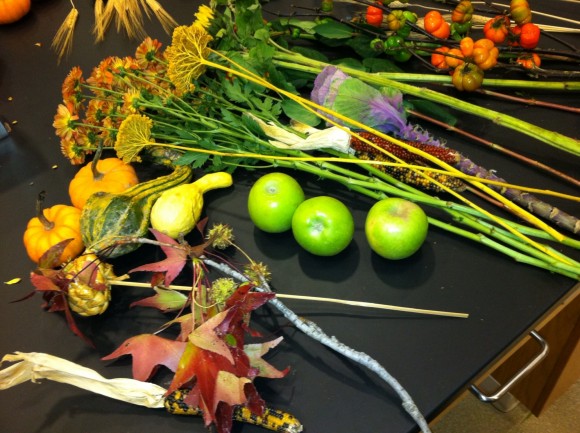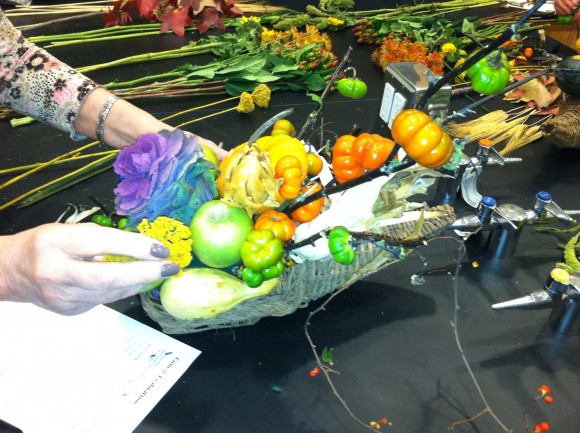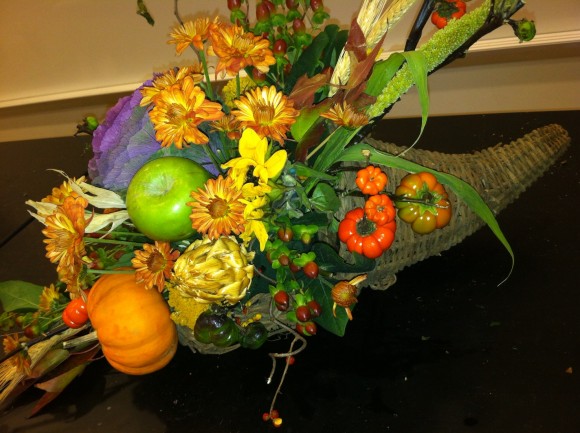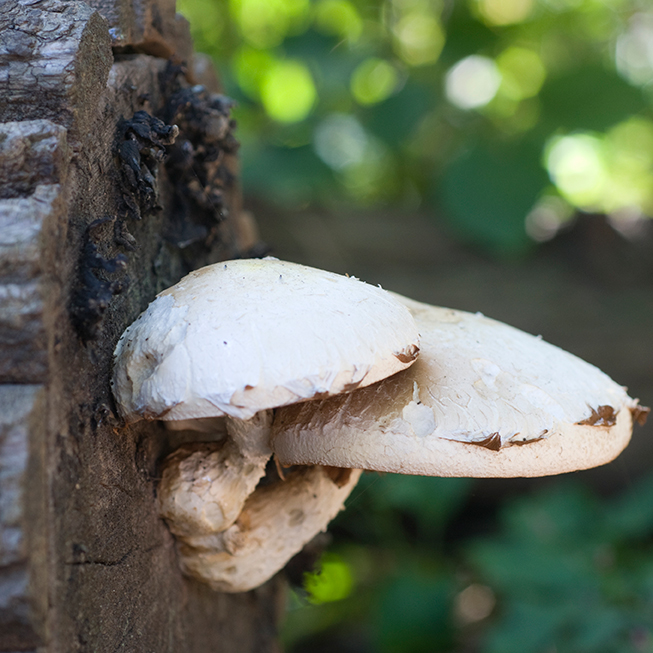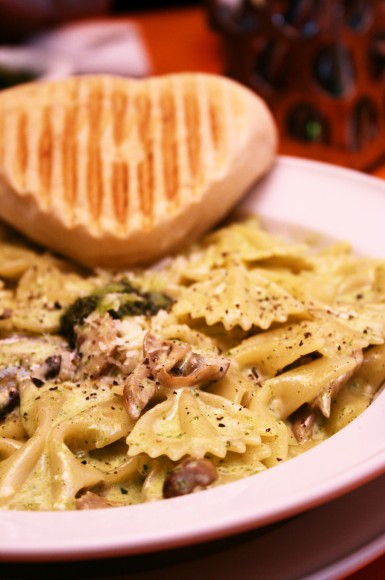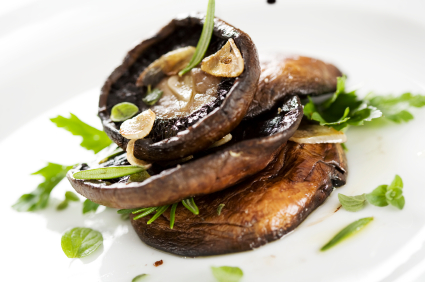It’s a big week for cooking, for getting out the china, crystal, and silver, and for setting a holiday-worthy table…but have you thought about a centerpiece yet?
A cornucopia, or horn of plenty, is a classically beautiful, easy, and crowd-pleasing way to pull together a centerpiece without a lot of fuss or expense. I taught a fall cornucopia class at the Garden, and I had the pleasure of appearing on WGN-TV with tips for making an edible fruit-and-vegetable cornucopia. This week, I thought I’d share a few tips that both cornucopias have in common.
Whether you’re using flowers or fruit or vegetables, the process of assembling a cornucopia is basically the same. Once your supplies are gathered, it should take less than an hour to put together.
Gather the basic tools
Horn-shaped cornucopia baskets are readily available at craft and hobby stores. In addition to a basket, you’ll need pruners, floral picks, a hot-glue gun, a small plastic liner tray that fits into the front of the basket, and a chunk of floral foam that fits into the tray. If you’re using fresh flowers, prepare the floral foam by soaking it in water.
Gather the bountiful ingredients
No two cornucopias are the same; the ingredients will vary, of course, according to availability and personal taste.
For a fall cornucopia, your ingredient list might be: millet, wheat, gourds or mini-pumpkins, flowering kale, dried artichoke, green apples, stems of hypericum, a small bunch of long-stemmed mums, sunflowers with long stems, baby corn, dried yarrow, sweetgum leaves on a twig with seedpods, and a variety of nuts.
For an edible cornucopia, your ingredient list might be: an assortment of apples and nuts, Indian corn, pumpkins and squash in various shapes and sizes, and a bunch of fall flowers (widely available at grocery stores).
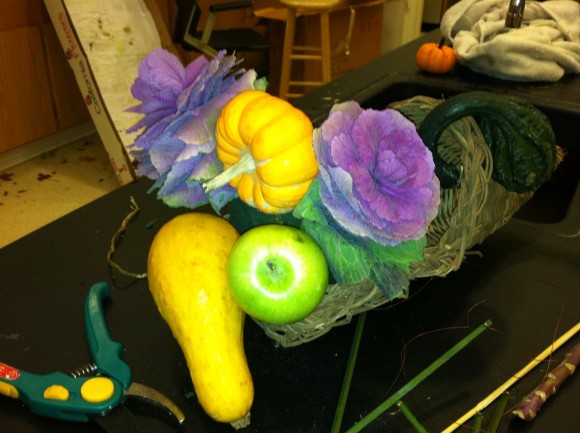
Assemble the base
Set the floral foam (dry for fruits/vegetables, wet for fresh flowers) into the small tray and into the forward portion of the cornucopia basket. Anchor the foam on a prong if desired.
Starting with the largest material—pumpkins, gourds, large corncobs, and large sunflowers. Insert floral picks and position them in the foam. Heavy, rounded items should be at the bottom, toward the front.
Layer in the smaller items
Add picks to apples, dried artichokes, and small gourds. Layer them singly at angles to the heavy items. Try to cover the corners of the floral foam.
Next, layer in fresh or dried flowers, using them in small bunches rather than individual stems. Insert some leaning high and toward the back of the basket, and others leaning low and toward the front, creating extension and depth.
Fill in the gaps
Add hypericum or mums in clusters to hide empty spots. Then add single flowers as needed to help pull all the elements together. A finished cornucopia has height, balance, and both forward and backward movement.
Finish with millet for “line,” plus foliage and nuts. (The glue gun comes in handy for attaching nuts to floral picks.) The overall effect should be one of spilling bounty.
Happy Thanksgiving, everyone!
©2013 Chicago Botanic Garden and my.chicagobotanic.org

